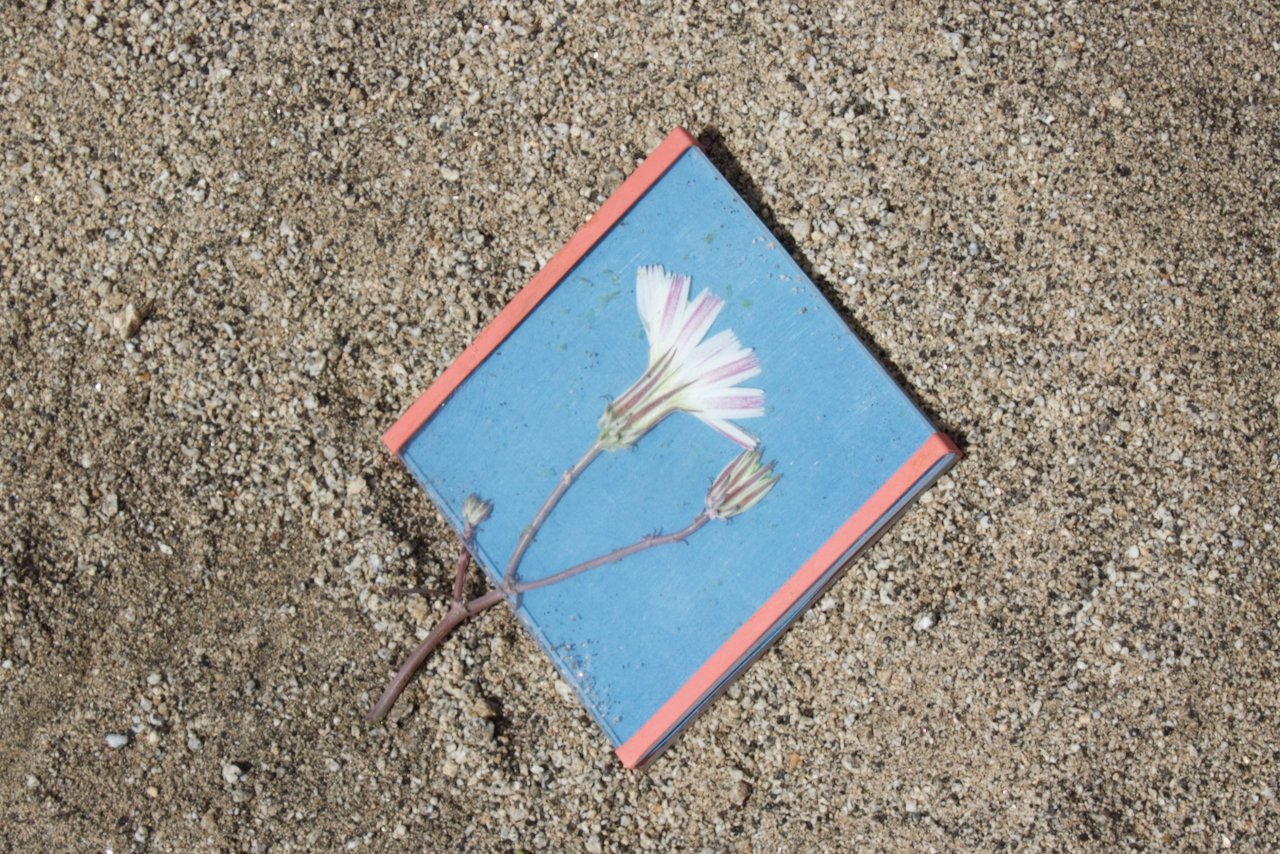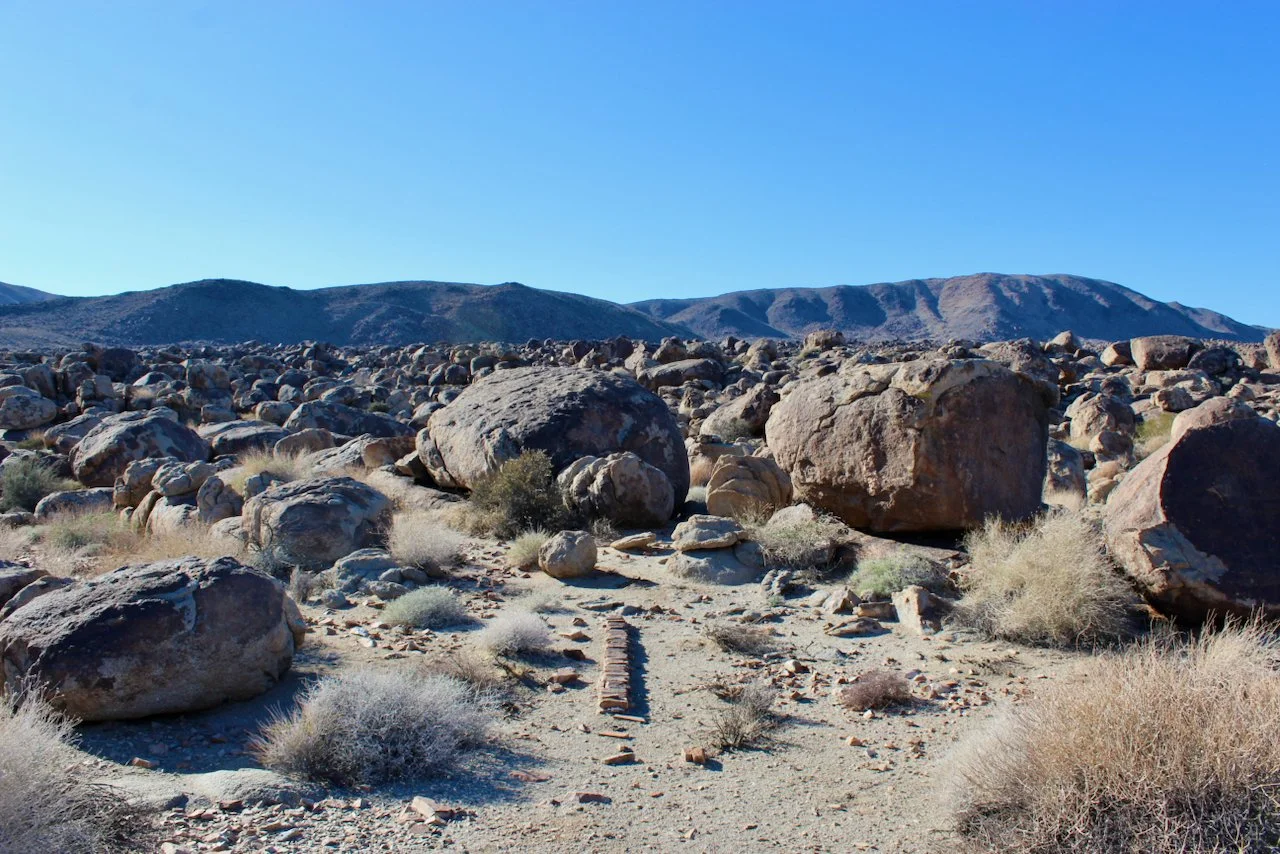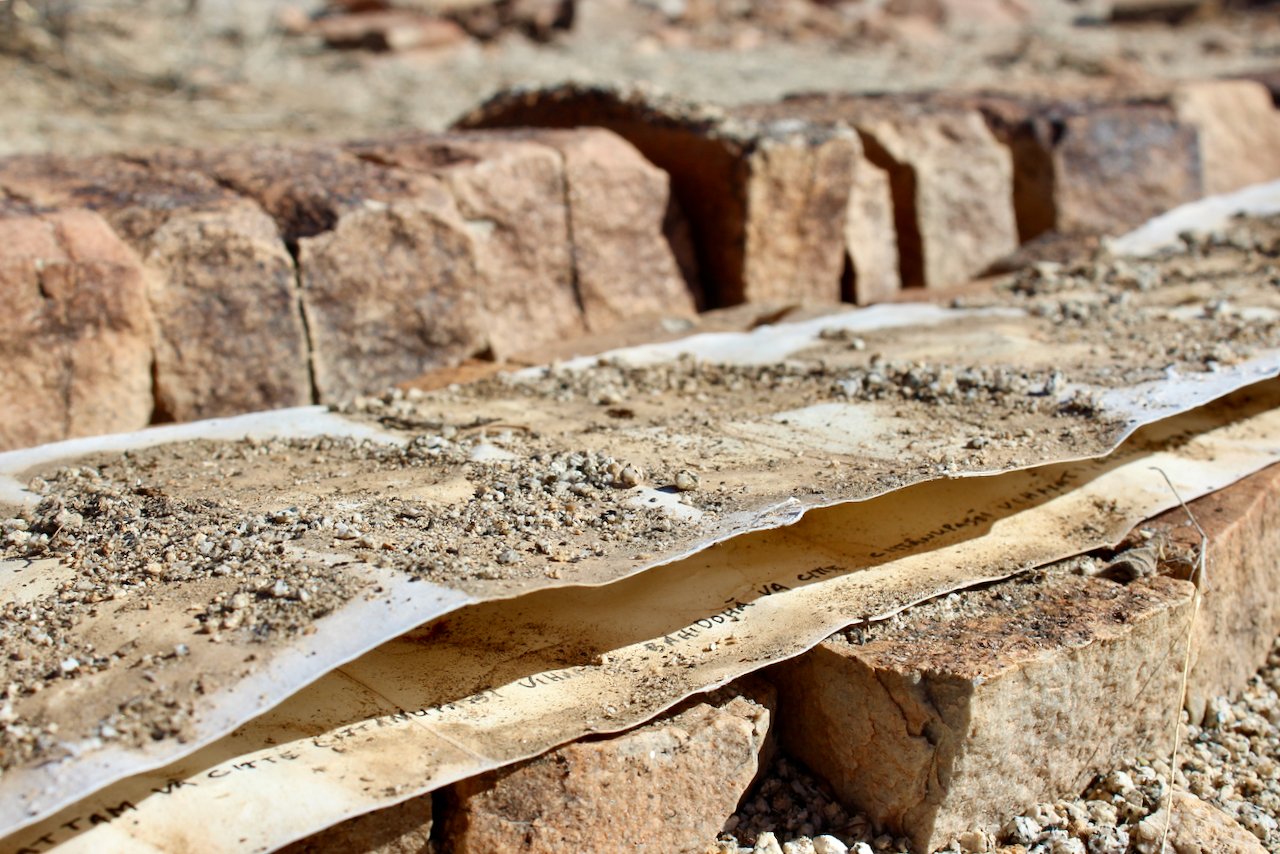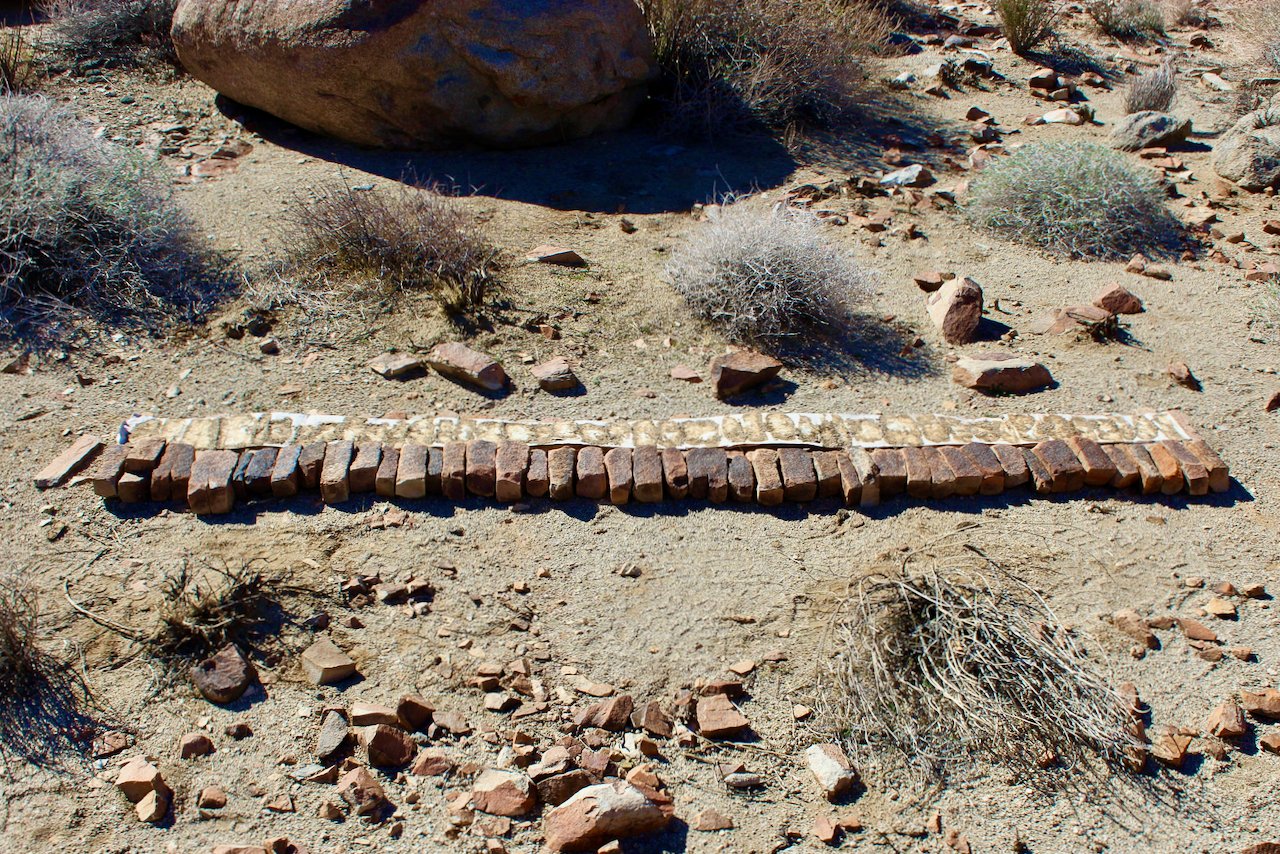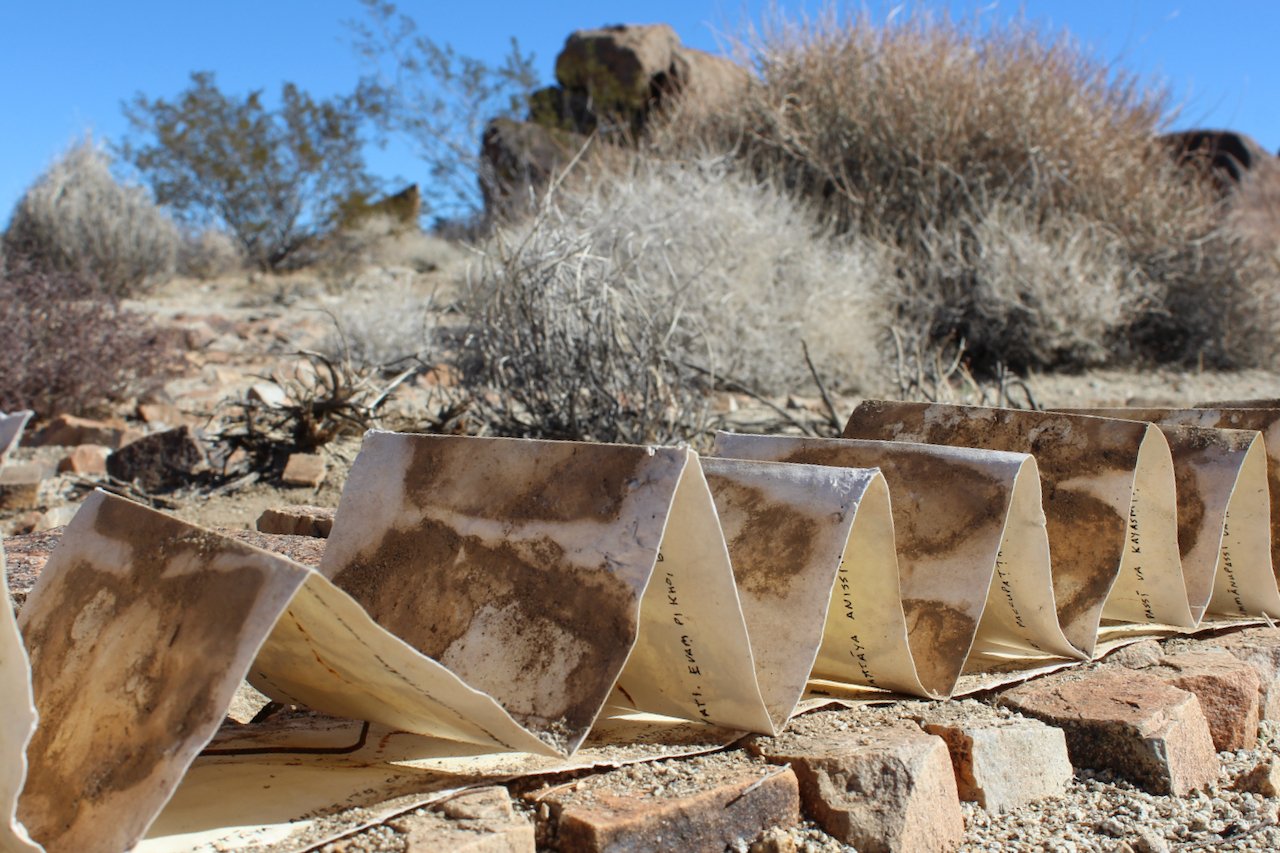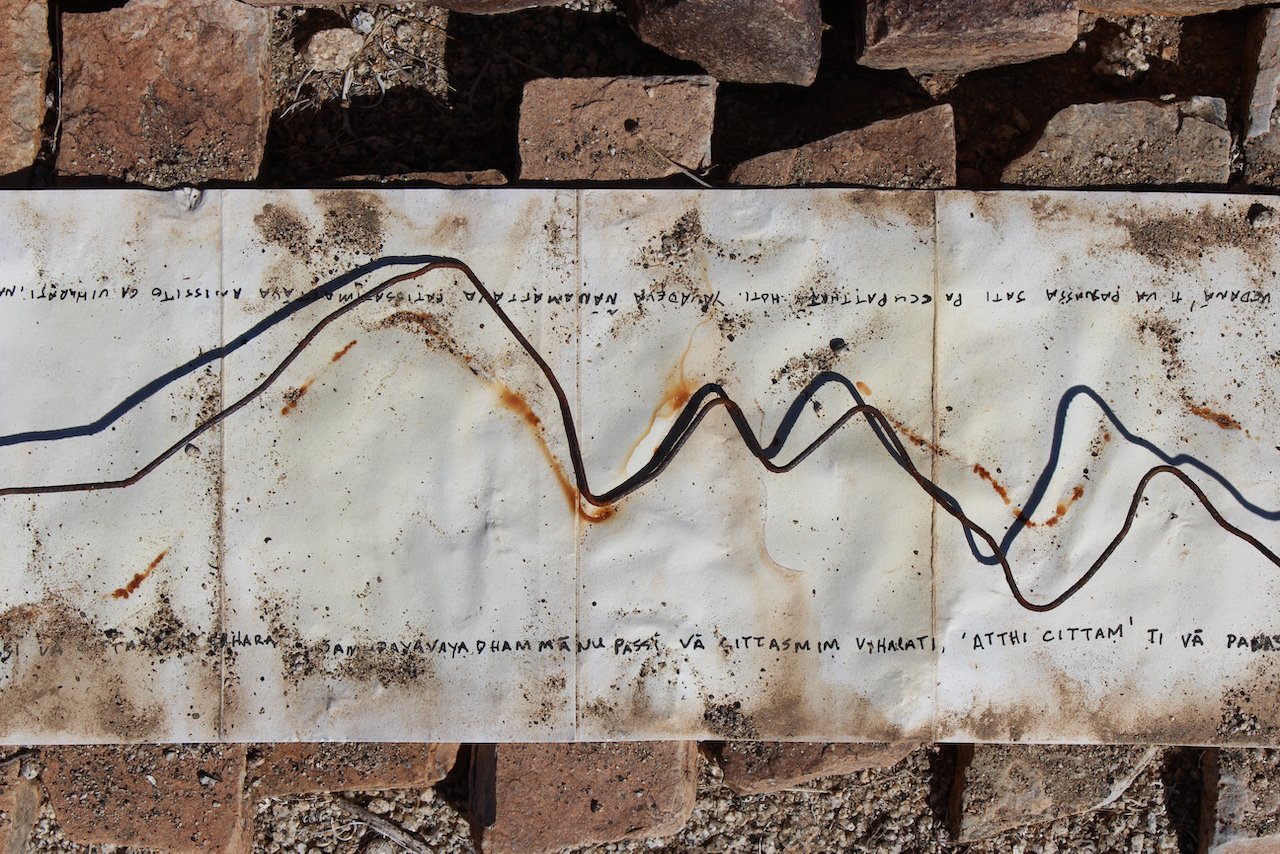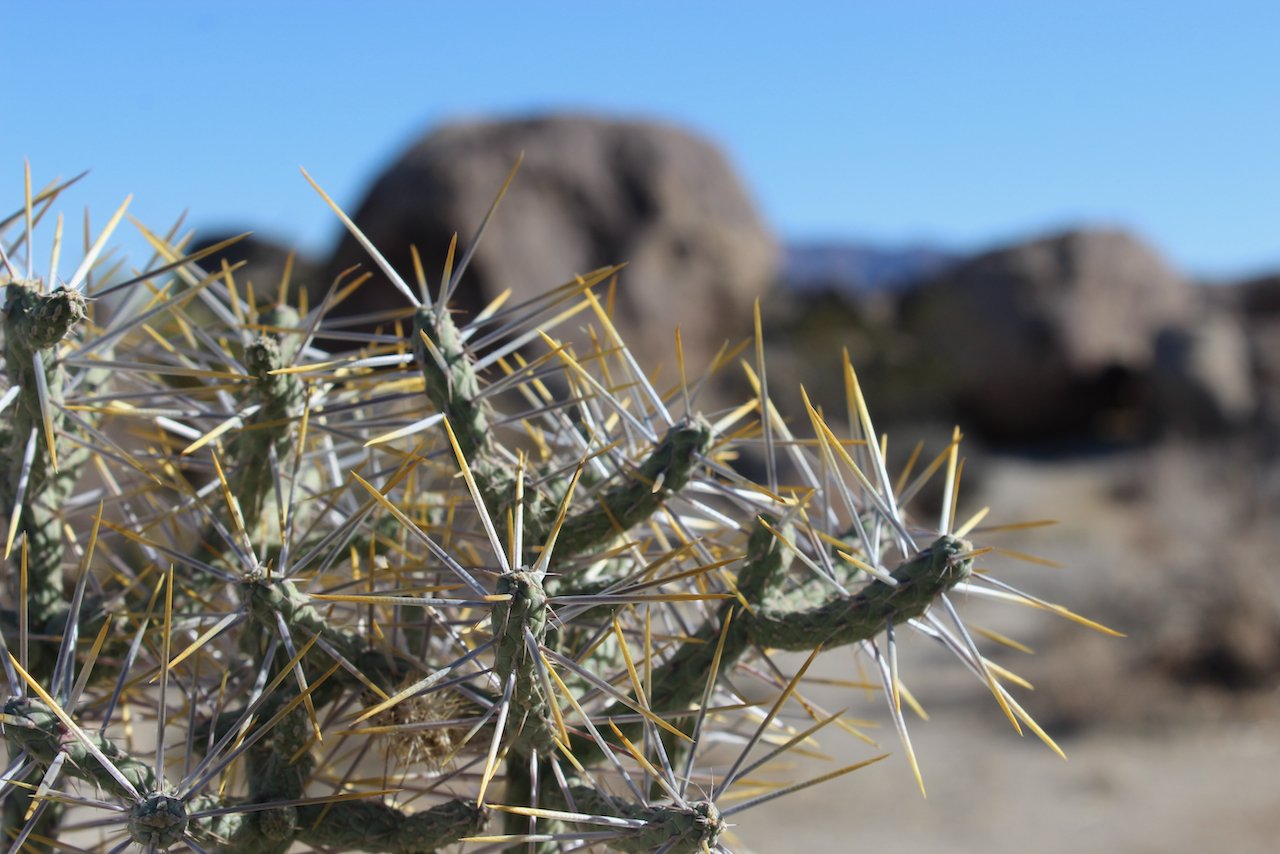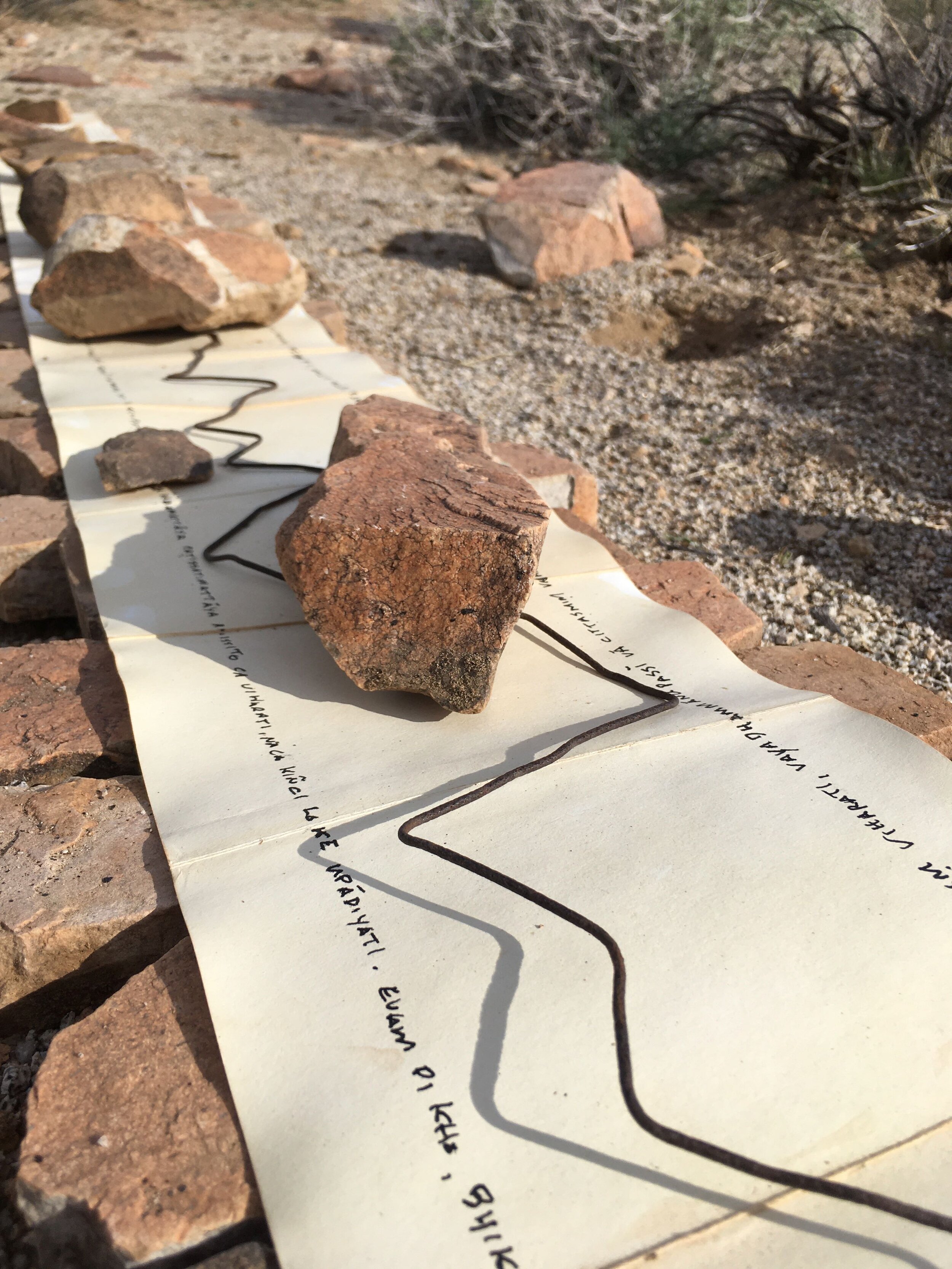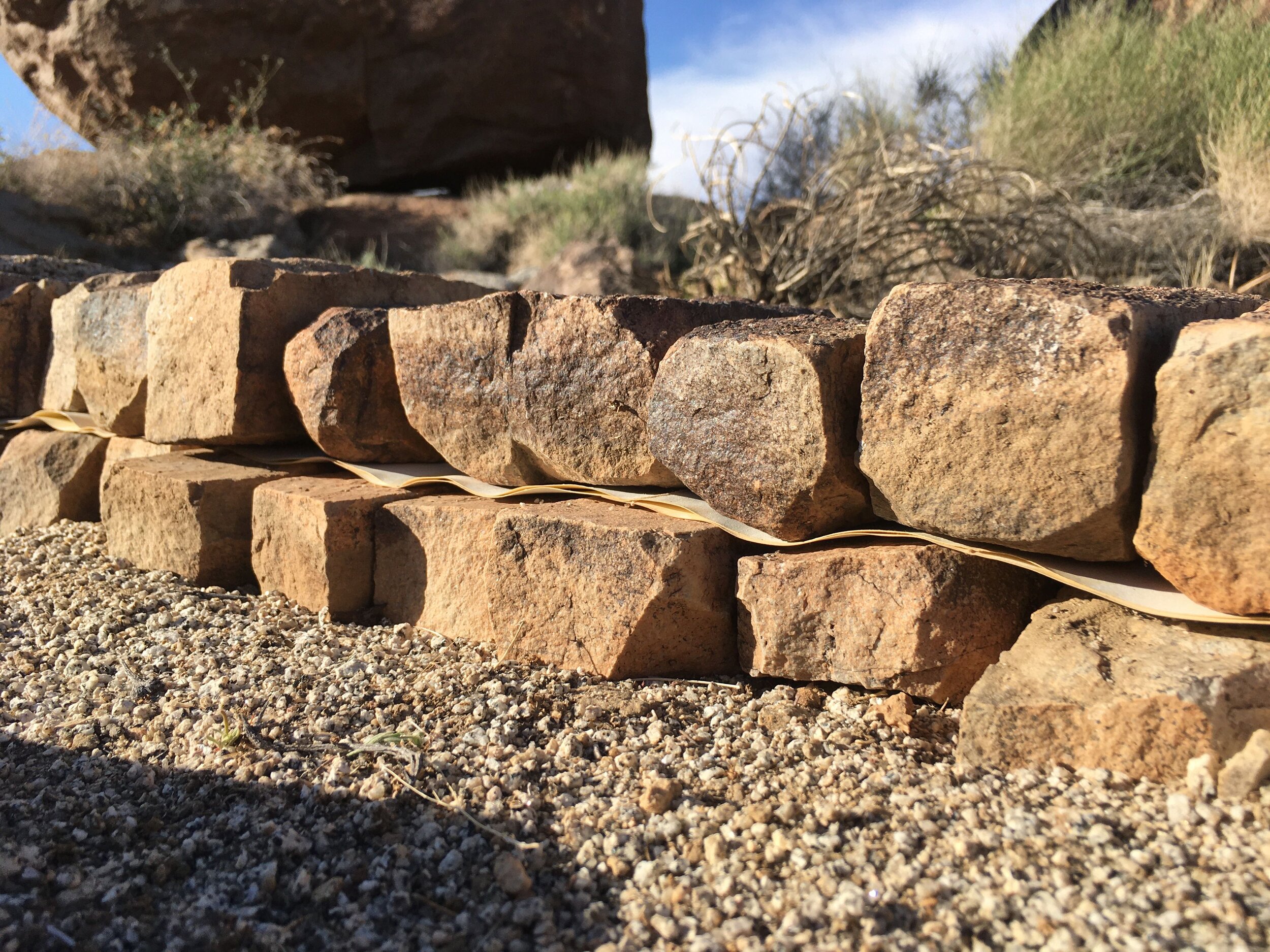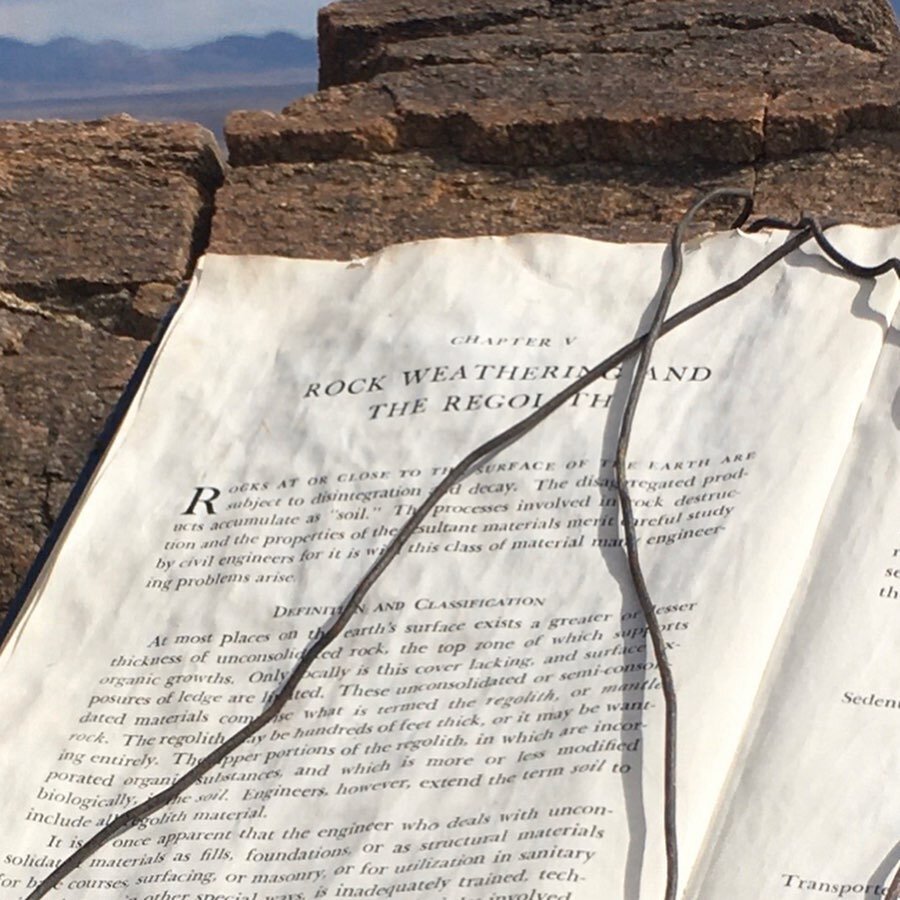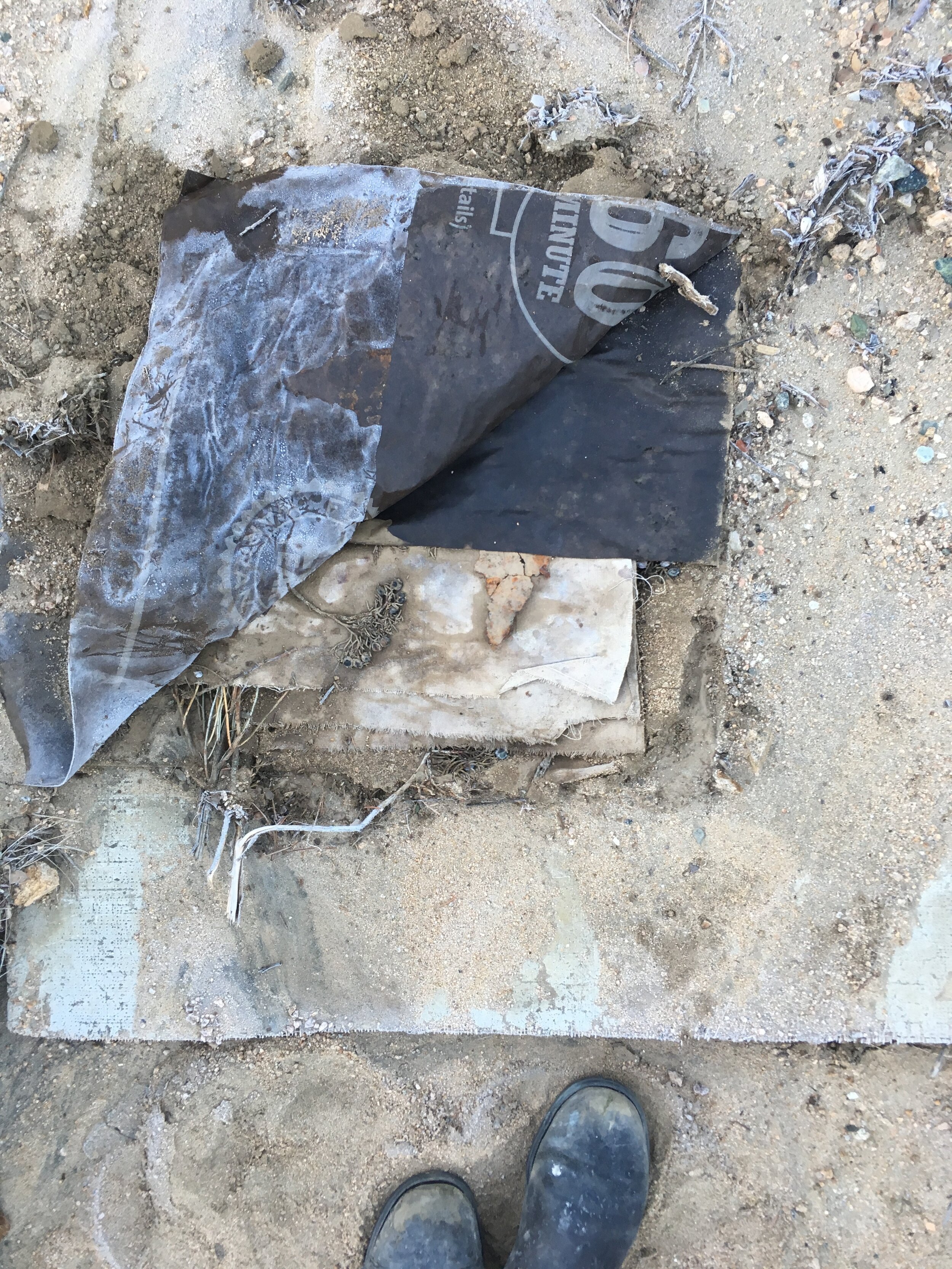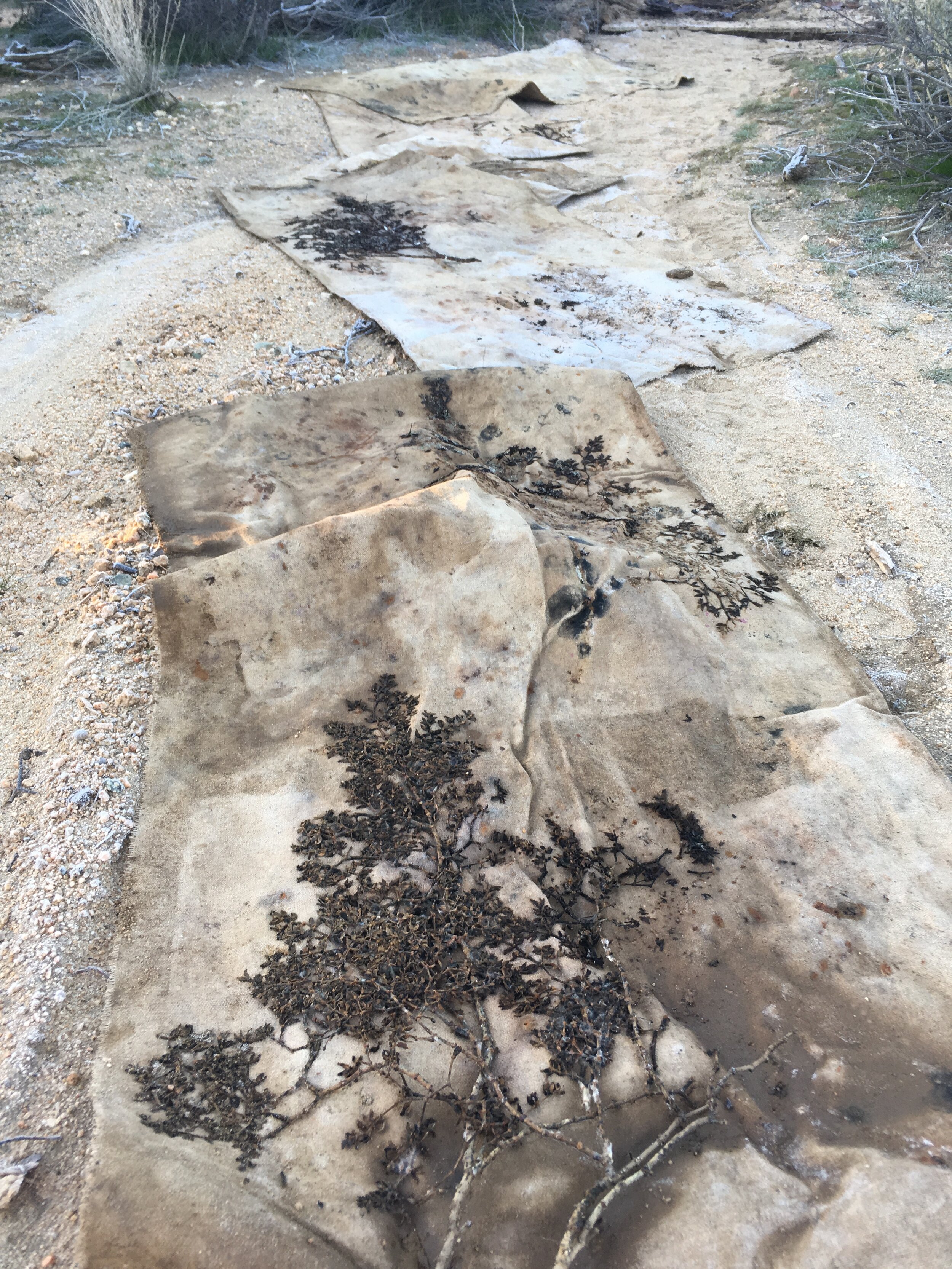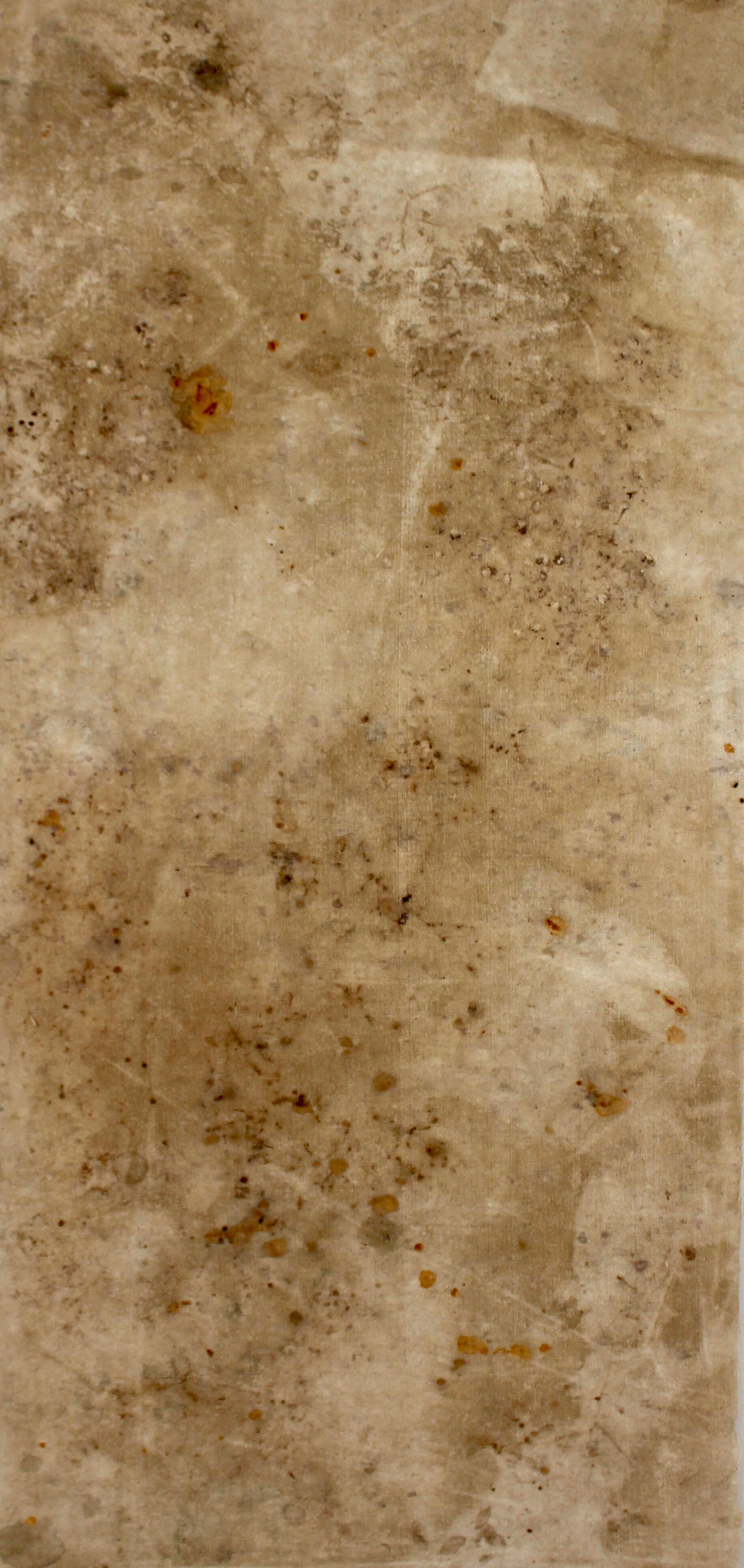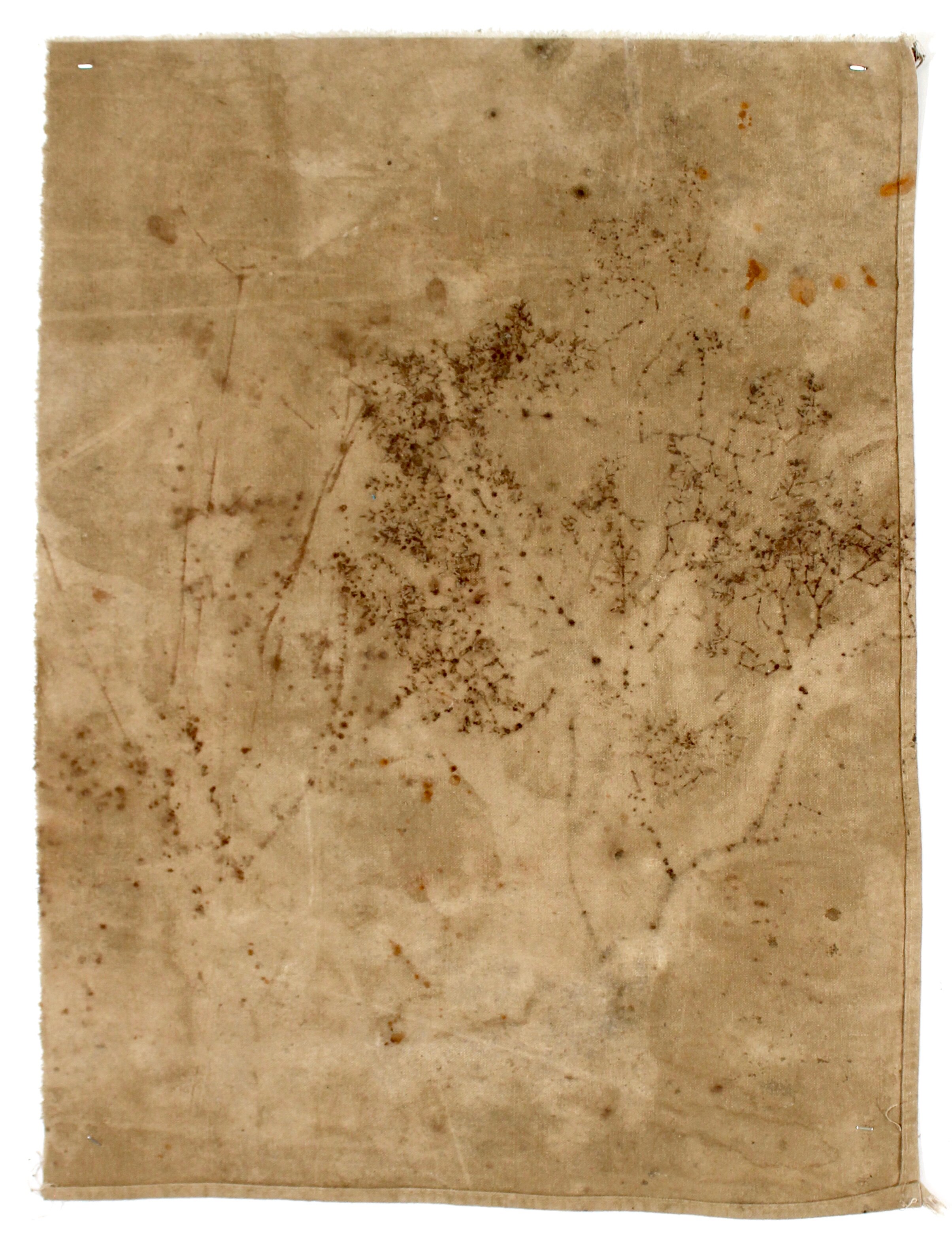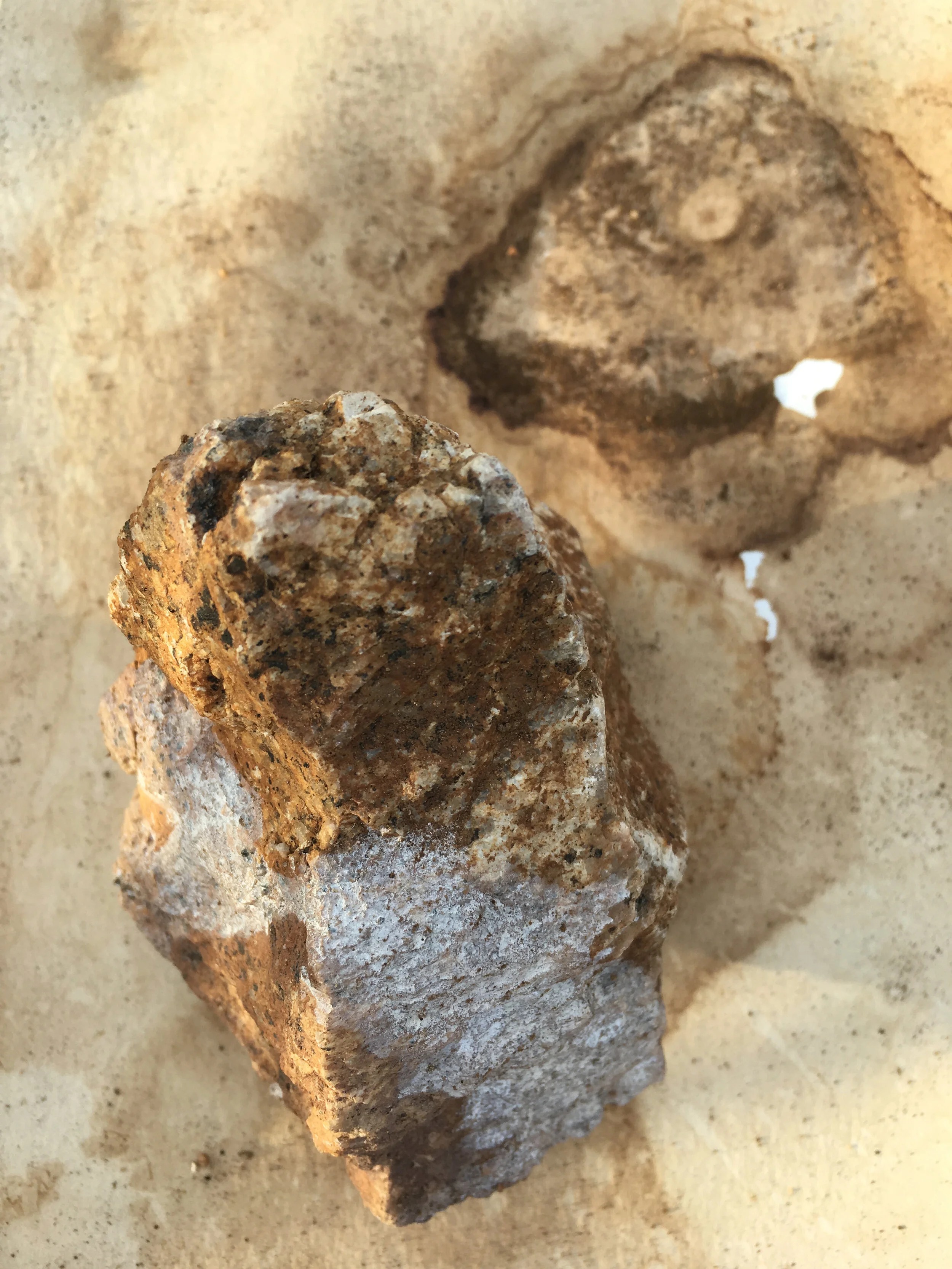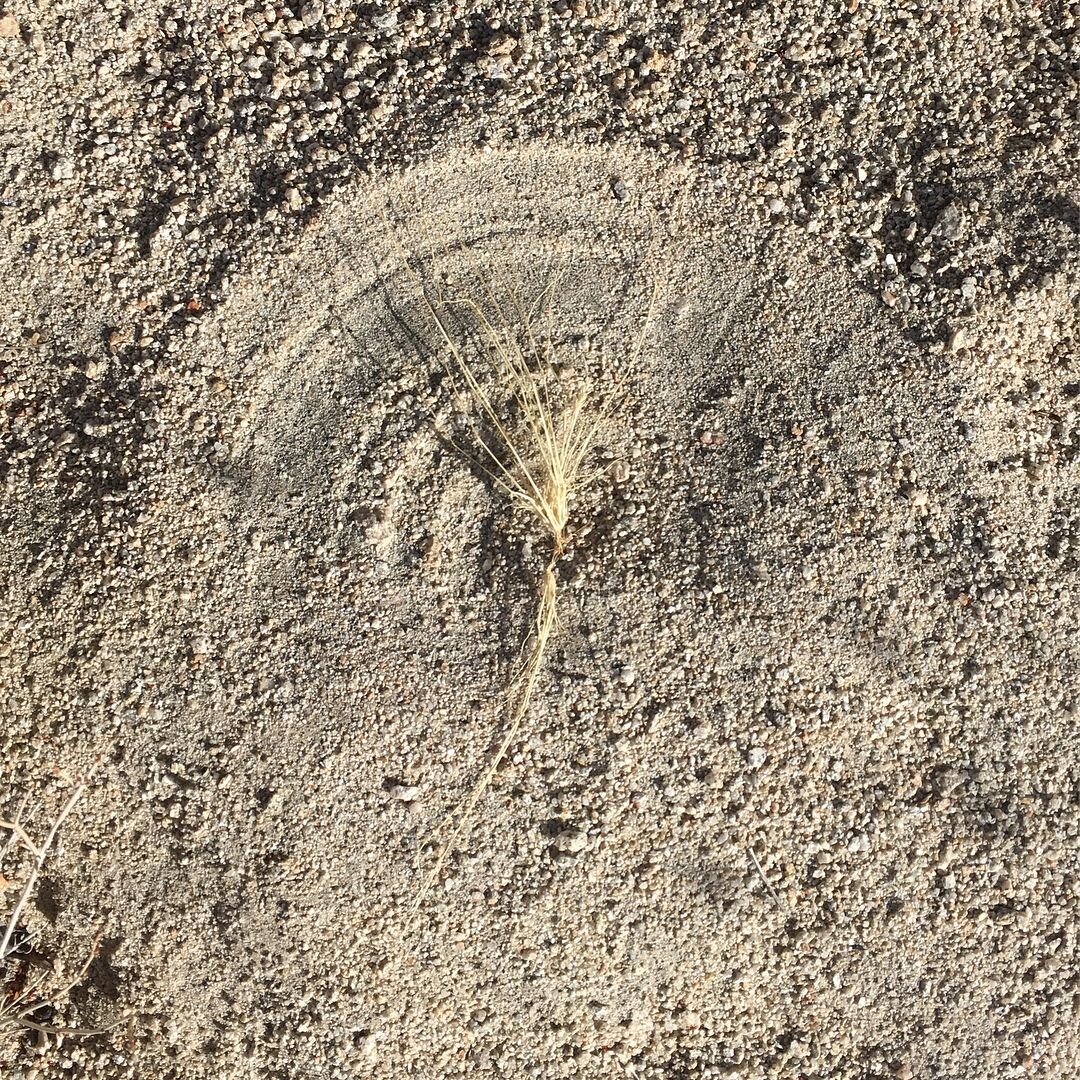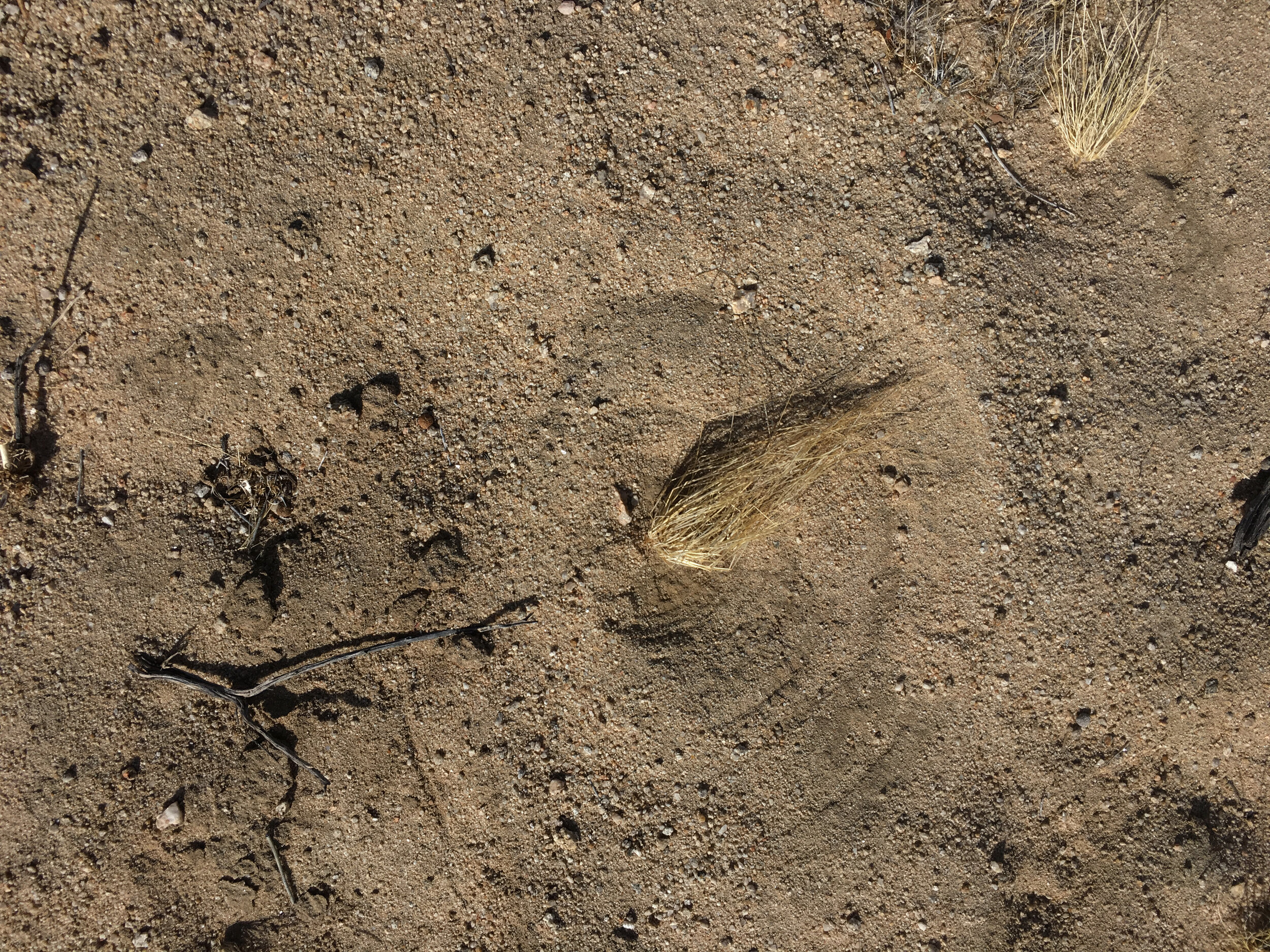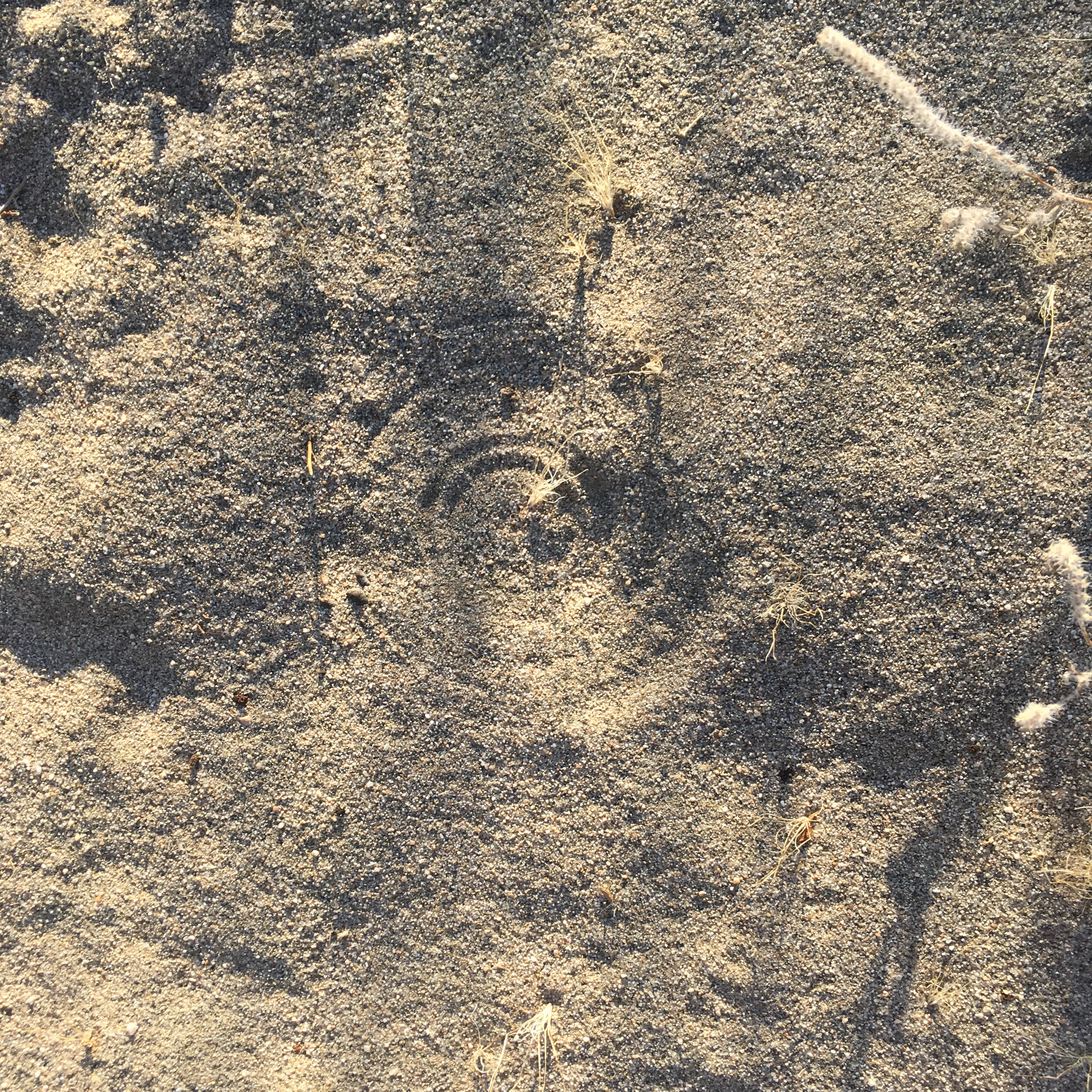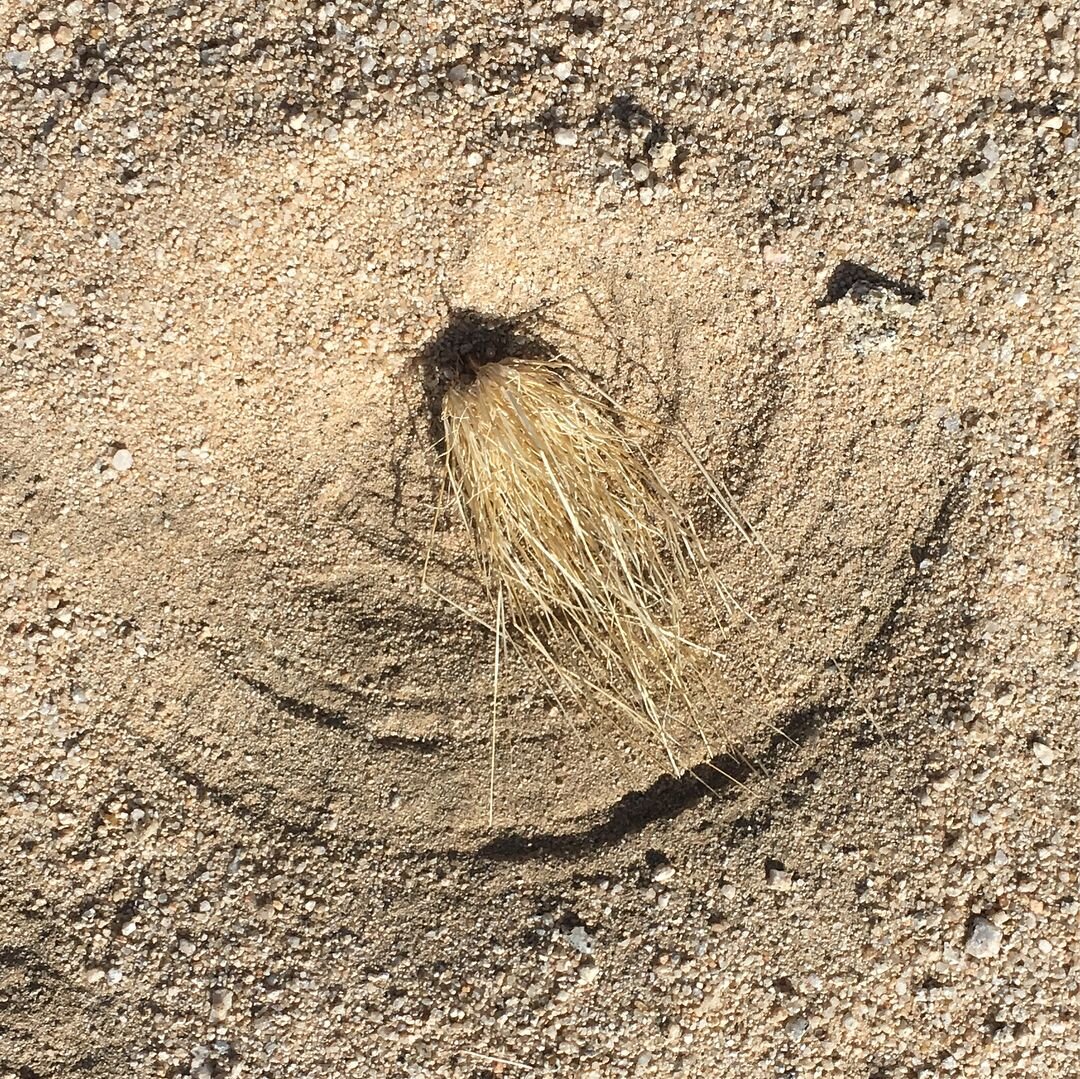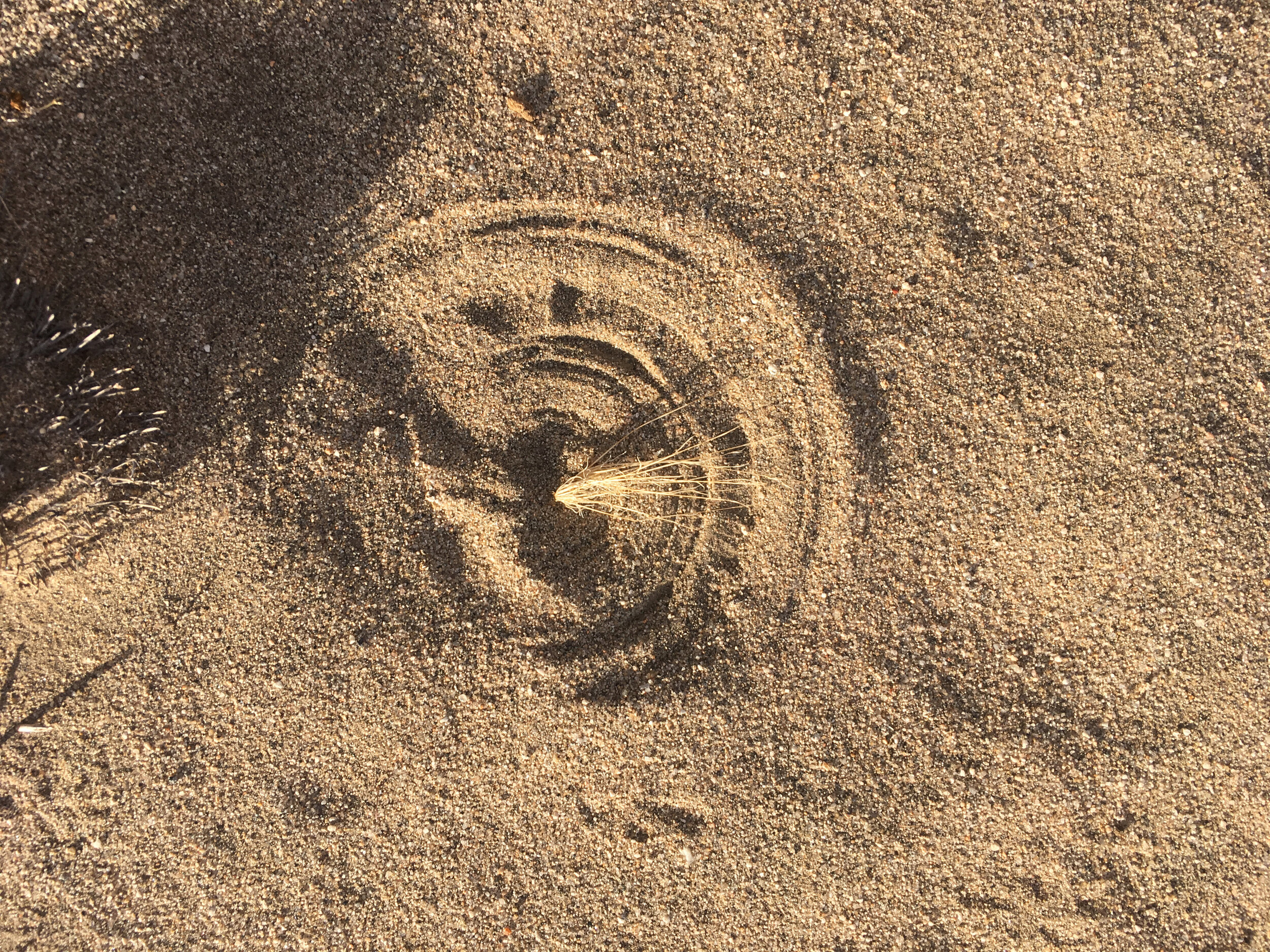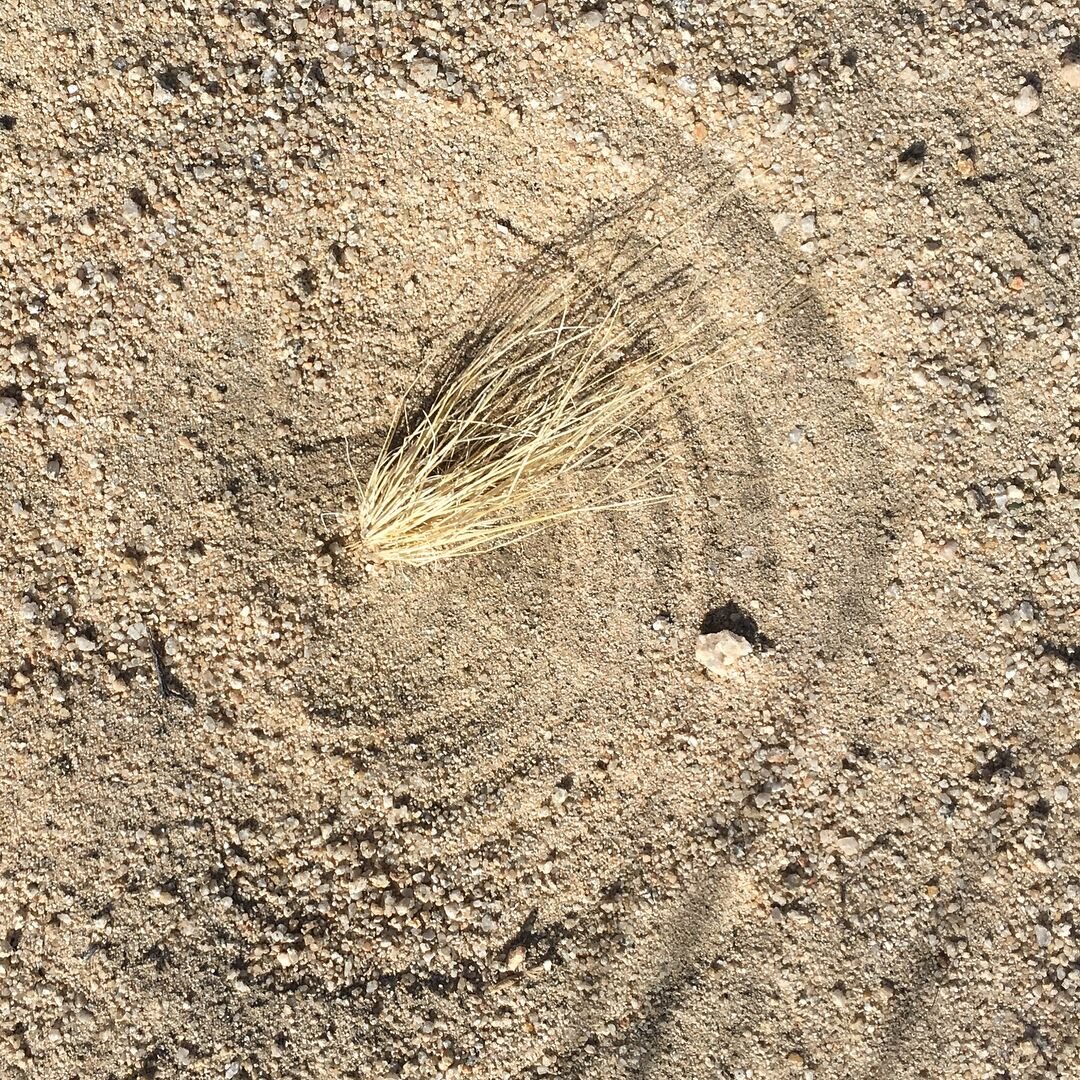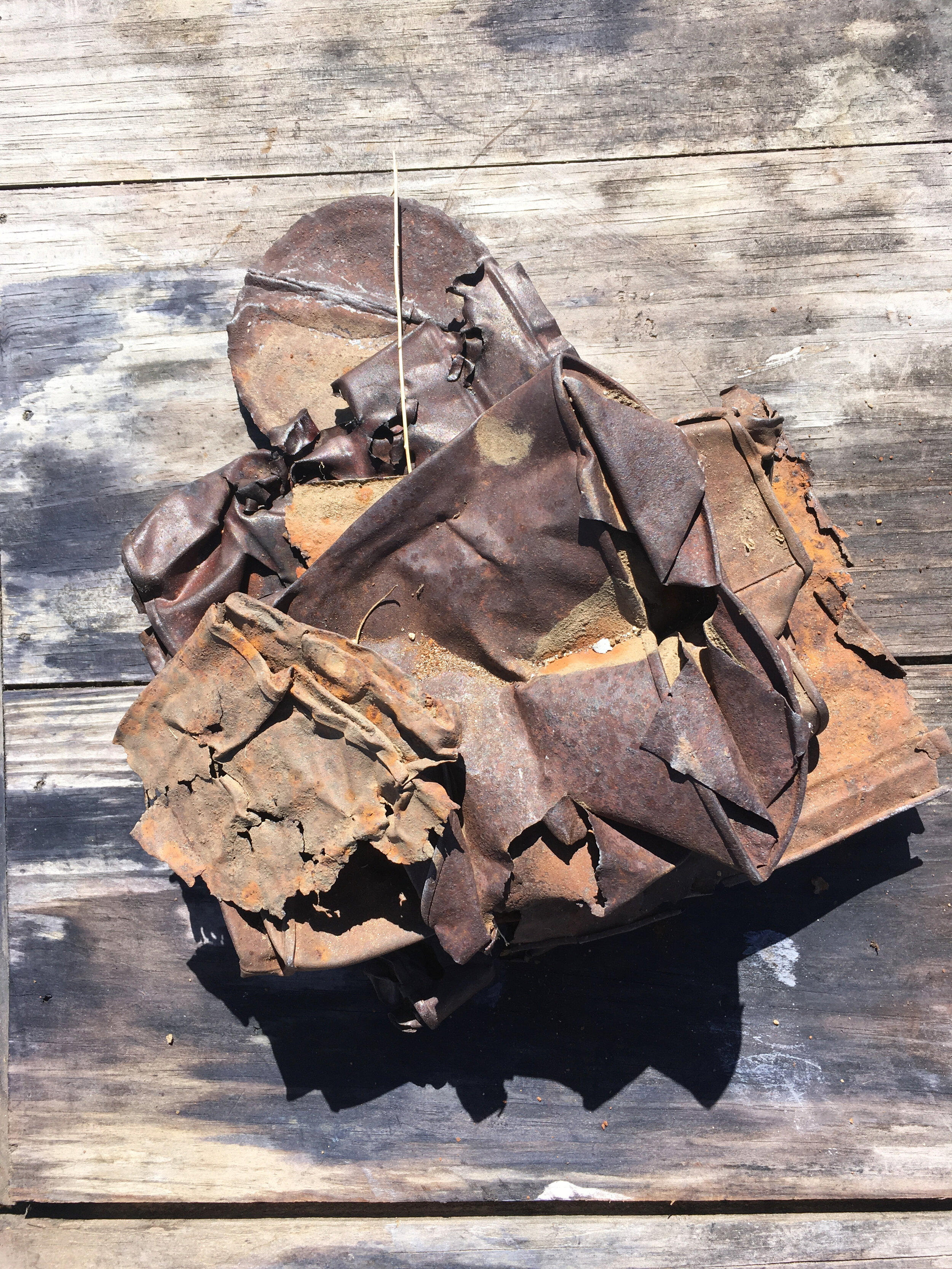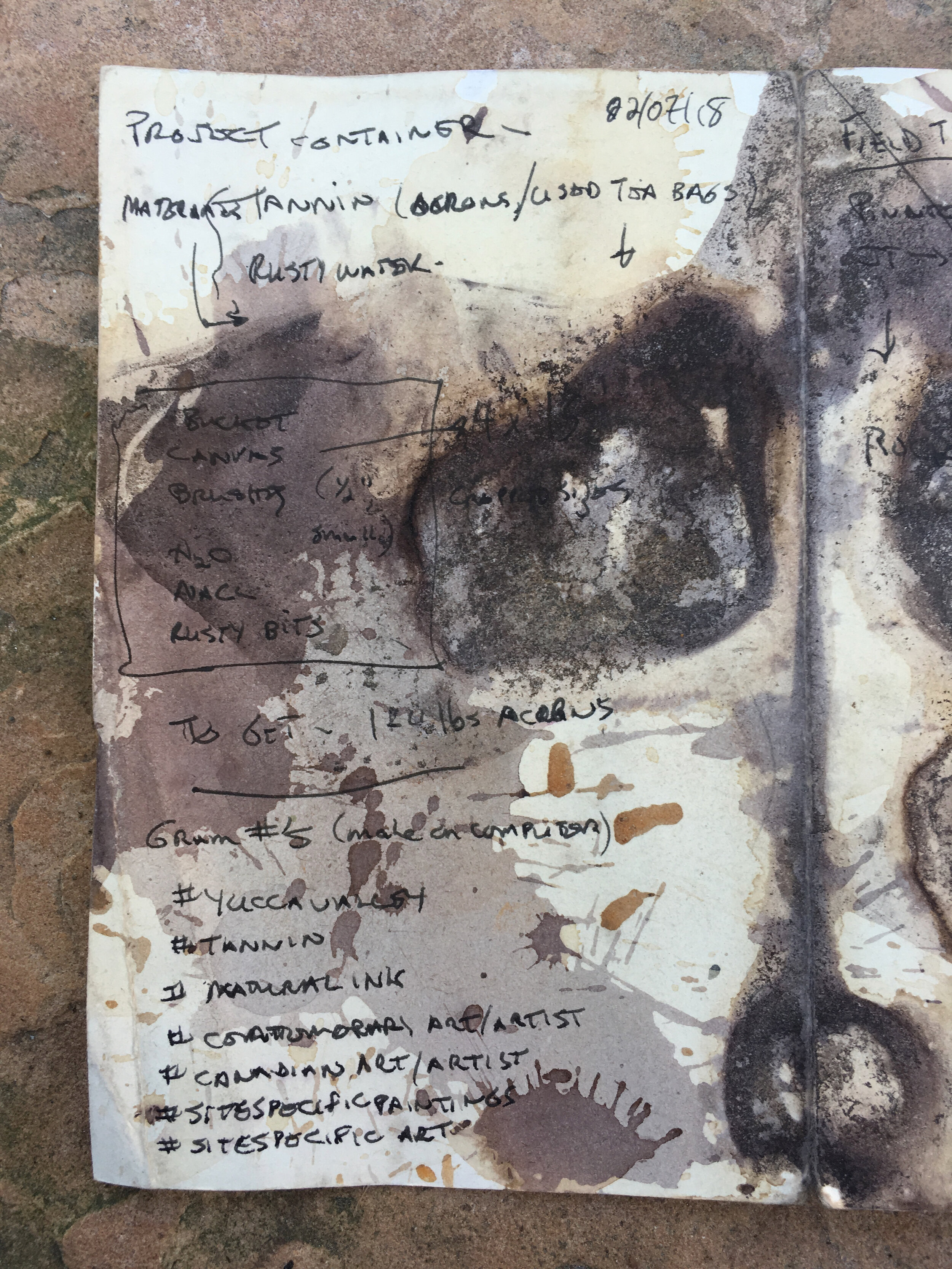work of wind, work of water
mojave desert, california
2018 - present
Based in an area of Southern California’s Mojave Desert, work of wind, work of water engages aspects of the location’s climate, topography, and geological history through printmaking experiments, low-impact long & short term installations, and timelapse video.
Returning to the region repeatedly for varying lengths of time since 2018, previous installations are retrieved while new ones are set up. Selected work and details below.
2024
BoxoPROJECTS installation update
One of five panels installed 2022 on the property, this installation will continue to be exposed to the prevailing south-westerly winds.
For more information and details of the installation, visit here.
2023
by accident & sympathy, video, 03:03
This video project acknowledges the support of the Canada Council for the Arts. Nous remercions le Conseil des arts du Canada de son soutien.
by accident & sympathy includes documentation gathered from a two cameras placed in remote locations in 2020 and 2022, along with footage from another project site. It presents a spectrum of agency in our relationship to the natural world … more
133 minutes of sun & flowers, cyanotype paper, flowers, sun, 03/06 15:36 - 17:49
2022
The highlight of this year’s trip was installing a durational piece at BoxoPROJECTS, a multi-program arts initiative & research outpost for the investigation and development of ideas related to place, community and the environment.
Five wood panels treated with a cold wax medium called cera colla face the prevailing south-westerly winds and over the coming months will record their experience of this ubiquitous desert force. For more information and details of the installation, visit here.
Many thanks to BoxoPROJECTS and director Bernard Leibov for his enthusiasm and support.
tea in the Mojave with the Mahasatipatthana, or the four-fold path in forty-eight folds rock, paper, wire, ink, 2020 - 2022
Installed in 2020 and retrieved in 2022, a host of regular brick-shaped rocks found at this remote site in the Mojave compressed two outstretched accordion books coated with tea and laid face-to-face against a piece of wire sculpted into a pattern reminiscent of the rising & falling contours of the surrounding mountains.
Running along the top & bottom of the two books are four key passages from Gautama Buddha’s ‘Mahasatipatthana’ (The Great Discourse on the Establishing of Awareness’, Digha Nikaya 22), describing how to observe the phenomena of rising and falling within your own body & mind.
Detail, deinstallation, 2022
metaphysical survey, book, wire, vegetation, ink, 2020 - 2022
Bound to a rock at a remote site in 2020, Methods of Surveying and Measuring Vegetation (Commonwealth Agricultural Bureaux, 1954) combines theory with practice, as samples & quick sketches of local vegetation layer this formerly popular guideline for pasture & range management. Part of an ongoing inquiry into the relationship between the quantification of place & our experience of it, the retrieval of this metaphysical survey in 2022 was accompanied by a photo survey (selection below) of a variety of plants found at the site.
fact meets fact, book, wire, rock, 2020 - 2022
Bound to a slab of decomposing granite atop an anonymous peak in the Mojave Desert in 2020, Geology for Engineers (D. Van Nostrand, 1954) engaged with the forces that inform the primary subject of its fifth chapter, ‘Rock Weathering and the Regolith’. After two years, the installation was dismantled and while the book is in the studio for further consideration, the lectern shaped rock which prompted the gesture continues to bear witness to the processes at work on site.
appraisal meets anicca, book, wire, rock, 2020 - 2022
Bound to a rock cradle found atop an anonymous peak in the former mining district of the Hexie Mountains, Southern California, Examination and Valuation of Mineral Property (Addison-Wesley Press, 1949) charts the ever-changing social values as the nearby Golden Bell mining claim now functions as tourist attraction. After two years, the installation was dismantled and while the book is in the studio for further consideration, the book-shaped cradle which prompted the gesture continues to bear witness to the changing social and environmental dynamics of the site at large.
Two time-lapse cameras installed in 2020 were also retrieved. The footage is being processed, so please check back for updates.
Thanks again for your time and interest. DE 2022
2020
Working in remote areas, a series of book installations below were set up in the winter of 2020. Short single-channel videos below were made from footage gathered during this period, while two automated cameras were left to shoot a picture every fifteen minutes, to be retrieved along with the installations in 2022.
night breathing, timelapse with lung sounds, 00:42 charting ten days of rising & falling darkness in ten breaths.
Alternating views from basin to range, this piece uses images taken three days apart at the same time (6:34 & 17:00 PST) to animate the sunlight’s path along the ecliptic plane.
2019
The focus of this year’s trip was scouting new locations while retrieving work left the previous year. Taking cue from #ecoprints & #bundledyeing techniques, a multi-layer canvas sandwich of rusty metal cans and common hi-desert plants foraged nearby was buried in a private lot in nearby Yucca Valley. Subjected to heat, moisture, and pressure over the year, iron mixed with the tannins in the plants to produce a set of works on canvas.
2018
work of wind, work of water derives its title from the same-named chapter titles of 20th century geological books and sets the tone for this ongoing exploration of the desert environs in Southern California. In the first year, experiments with making monoprints from and about local materials explored different ways to map the geological processes that have created this locale’s quiet mutability and astounding fragility & resilience. Working from an open-air studio in Yucca Valley, local plants and found objects inspired and directed the work over a period of three months.
Above: These works of wind, which I called ‘herbaglyphs’ (from Latin, herba, ‘plant, grass’ + glyph, orig. from Greek, gluphē, ‘carving’), inspired this studio piece for a subsequent project. GPS locations were taken of dozens of these with some enduring year after year, remaking themselves continuously.













